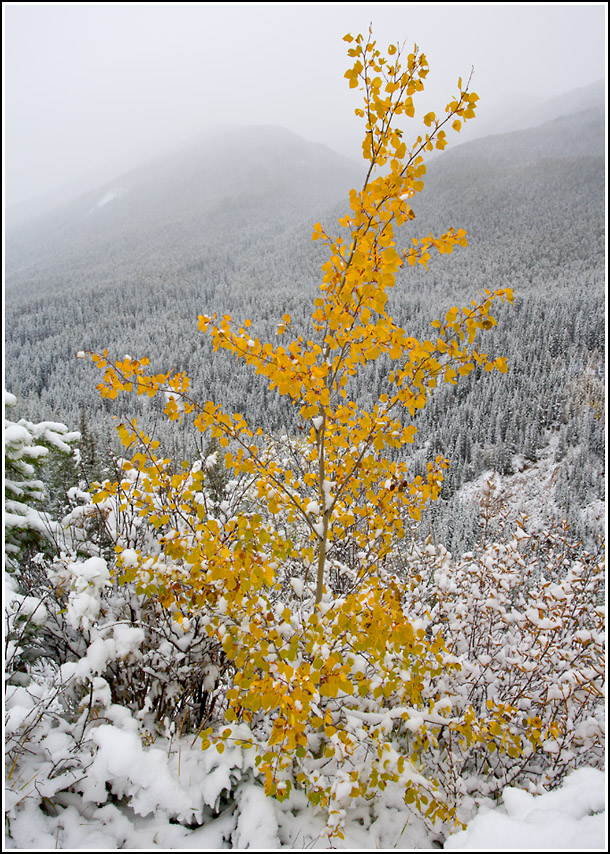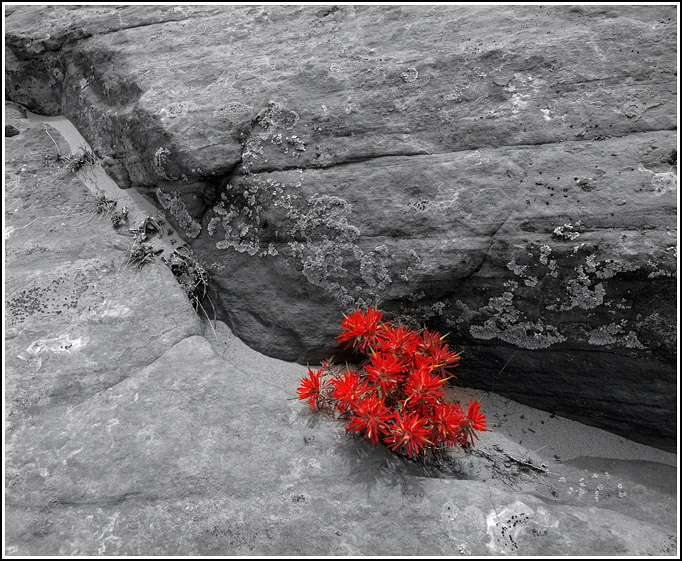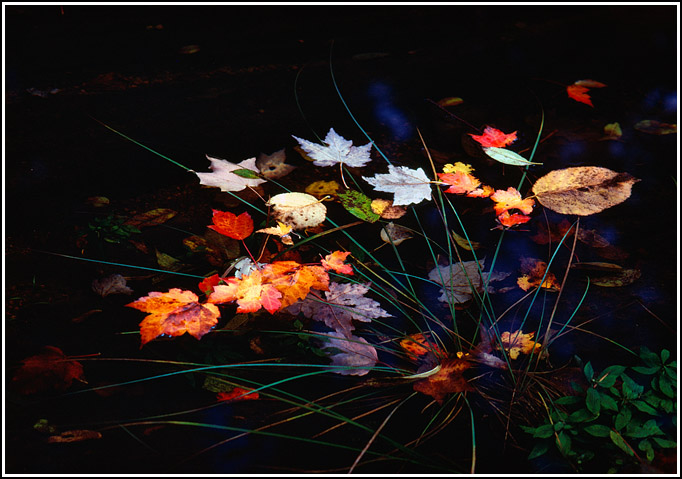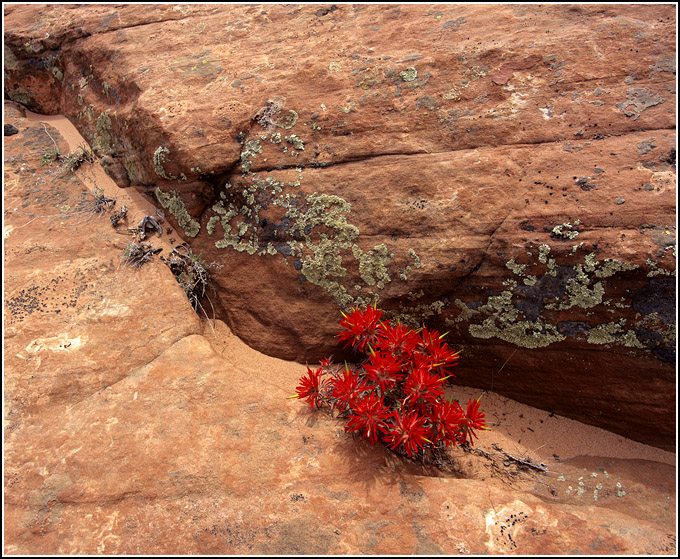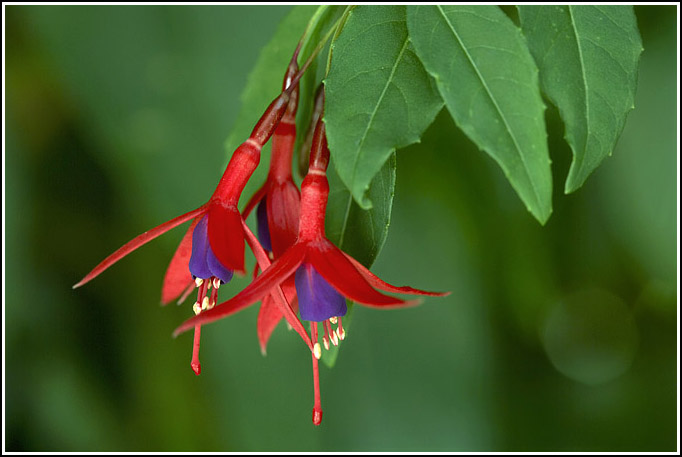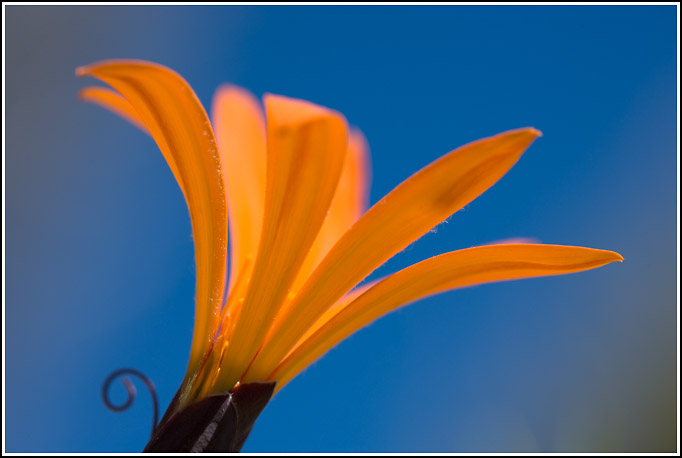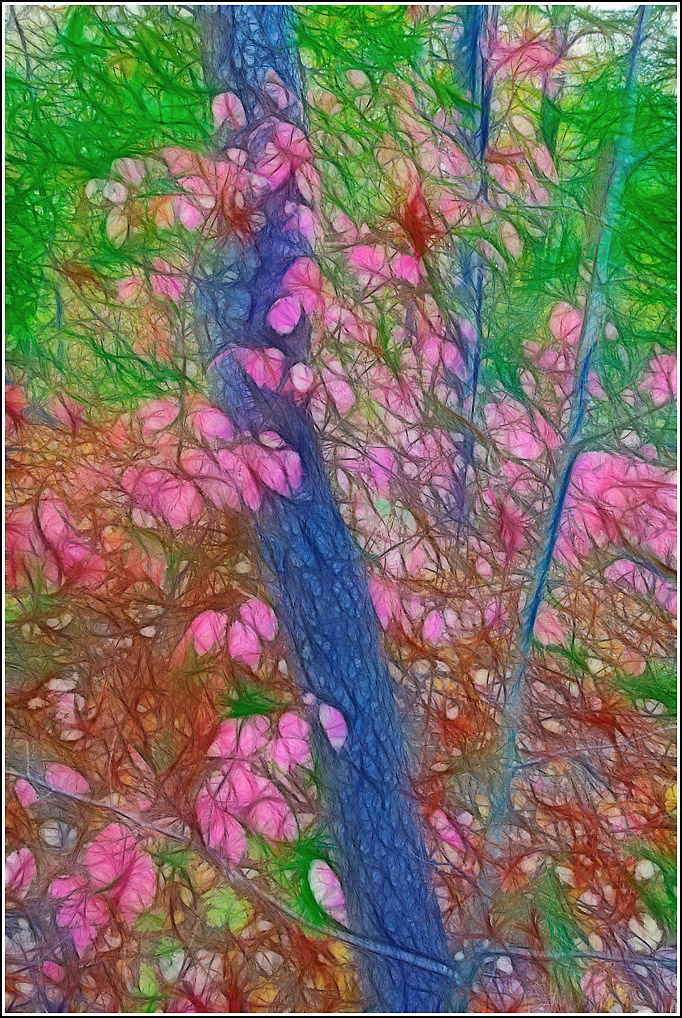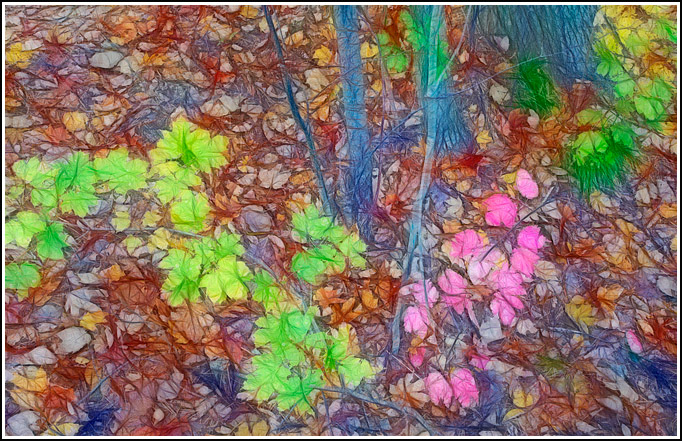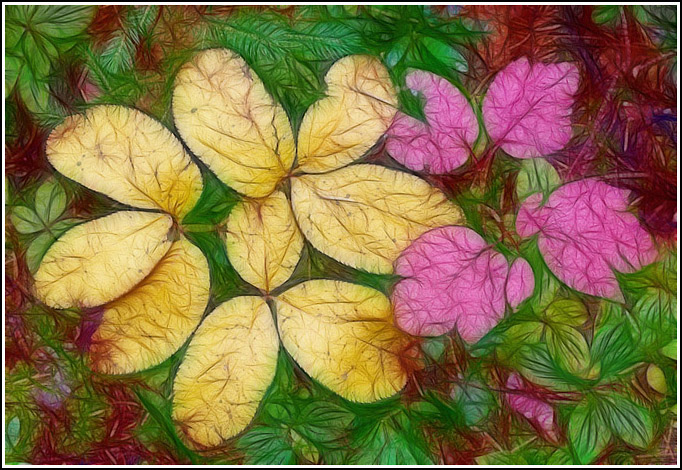This image was taken near Mount Edith Cavell in Jasper National Park, Alberta. An early snowstorm was dumping a good blanket of snow on the area.
A major adrenalin rush!
Robert Frost once said: “You cannot get too much snow in winter.” As a photographer I would add to that: nor in autumn. Snow on autumn leaves is pure eye candy.
The challenges under these conditions are more with driving and survival as with photography. You’re excited and you want to find your next shot quickly before it all melts. But you still have summer tires. And you’re on steep, smoothly paved, icy road.
Tricky scenario!
Photographic tip: bring a bag of sand, a blanket, food and water and a cellphone. In other words: prepare to end up in the ditch.
We made it to Cavell Lake. Sometime during the last century I got a nice sunrise on Mount Edith Cavell from here but today Ms Cavell is lost in a snowy blizzard.
This image was taken with a 17-40 Canon zoom.
I did not use the tripod – it seemed too dangerous to spend much time here. Bright conditions and the use of the wide-angle made it less critical to use the tripod.
